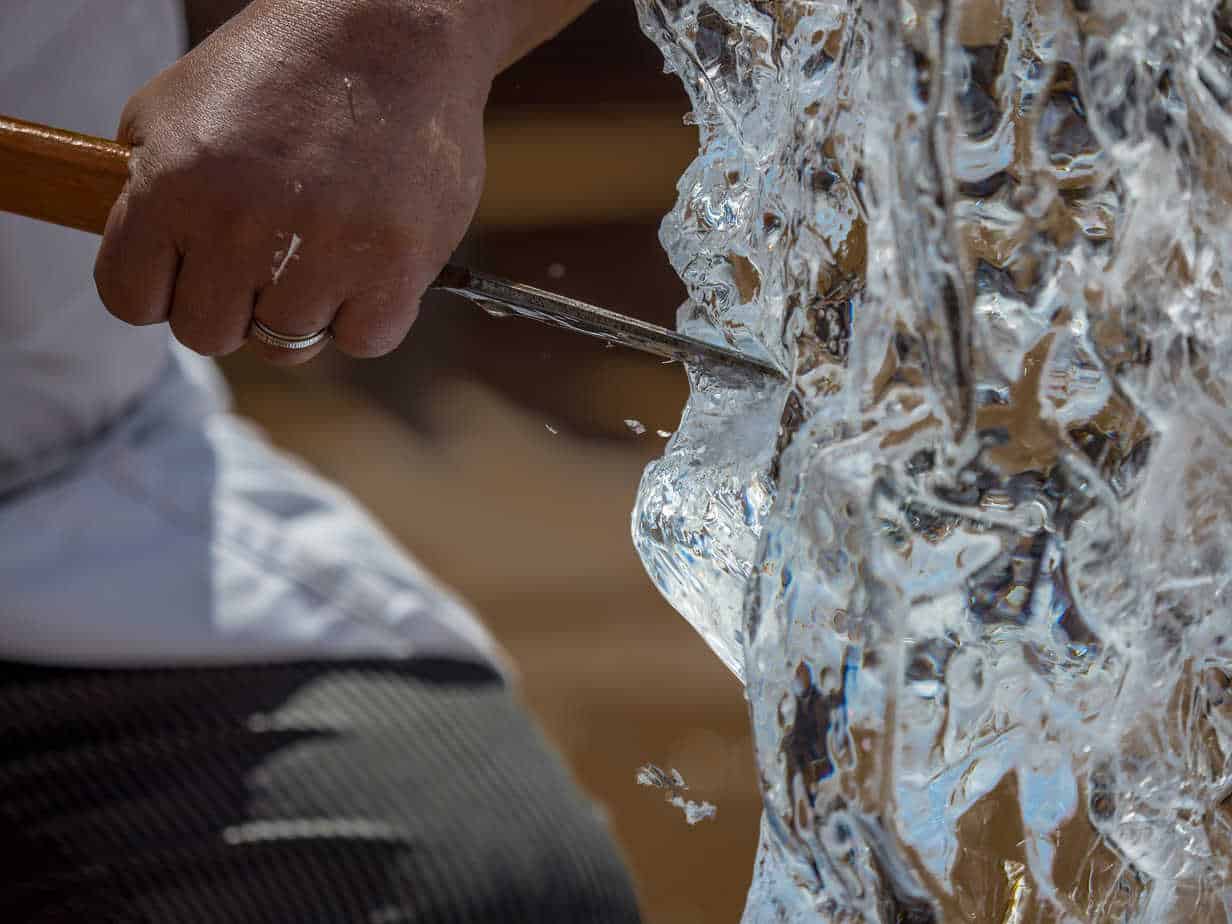Ice sculptures may look graceful, but takes a massive amount of labor-intensive work to create something so detailed and delicate. After years of practice, some people enter their ice sculptures into competitions, while others love using ice sculptures as a centerpiece in upscale parties. Also, there’s an old party saying: “Once the ice sculpture melts, it’s time to go home.”
Using specific tools, sculpting a solid block of ice takes finesse and extreme attention to detail while having expert skill on a wide variety of materials used. From chainsaws to navigating ice tongs, here is everything you need to know about ice carving tools:
Safety Gear
Ice carving is a very wet and cold endeavor, and while many overlook these safety items when purchasing tools, they ensure a safe and positive ice carving experience for artists.
Heavy Duty Apron: Using a chainsaw against an ice block means ice shavings get sprayed everywhere. Procure a heavy-duty apron (often made with leather, rubber, or a thick waterproof material) that covers your chest and lower body to minimize exposure.
Safety goggles, knee pads, and thermal gloves: When carving, there’s a lot of moving around the ice block, which includes getting on your knees to cut at the base. Avoid preventable injury by protecting your face and body from handling ice for extended periods of time.
Ear Protection: Working with power tools for hours is loud. Not only that, some sculptures can take several days to complete, depending on the intricacy of the work. Protect your eardrums with industrial strength earplugs or noise cancellation headphones.
Power Tools
Certainly, the most dramatic scenes in videos involve someone using a chainsaw, while the ice shavings are spraying everywhere. This is because cutting into ice is a very dense and hard material. If you don’t use power tools often, experts recommend practicing on other items first like food products and wood before moving on to a solid ice block.
Here are the most common power tools to use for ice carving:
Chainsaw: Artisans use chainsaws to cut off the larger parts of the ice and get the basic shape of what you’re trying to achieve. They come with an assortment of chains, depending on the goals of the project.
Die Grinder: Die grinders are great for tight corners and spaces that a chainsaw cannot get to. These come with a wide variety of specialty bits for various cuts and angles, some of which help create the smallest of details.
Angle Grinder: Angle grinders have textured disks with rough surfaces to scrape away at the ice. Angle grinders also give you the ability to use sandpaper to smooth out the surface seamlessly.
Hand Tools
After getting the ice block to roughly the shape and size you want via power tools, you then go in manually for the details. Here are some standard tools necessary to get the job completed:
Hand Saw: Hand saws provide a better handle on the parts you may have missed while using the chainsaw.
Chisels: Similar to the ones used in carving marble, chisels help round out edges by chipping away in small increments.
Ice tongs: Ice tongs are needed to move the block of ice around with minimal cracking or damage.
Jigs: Jigs are great for creating solid, straight lines to enable shallow to deeper cutting
Compasses: Compasses create perfect circles in the ice, which is especially useful in creating company logos.
Chippers: These help break up chunks of ice to smaller sizes for easier sculpting.
Finishing Touches
After you’ve completed the sculpture, the next step is adding the finishing touches to make it look pristine and professional. Even though it’s ice, you can often accomplish this with heat.
Brush: After all of that sawing, sanding, and drilling, there is probably debris on the ice sculpture. Use the brush to wipe off the excess ice so your sculpture will look polished.
Torch: Using propane, having a torch is just as fun as it sounds. Sweeping briefly over the sculpture, the fire melts down the ice only slightly to give it that glossy, finished look.
Whether you’re a professional with years of experience, or just trying your hand at this interesting project, sculpting ice is a fascinating practice. Sculpting ice utilizes creativity, an understanding of how ice forms and breaks apart, and powerful skill building via using power and hand tools. Ice sculptures are temporary; thus their beauty is fleeting while being enjoyed by all.







Leave A Comment